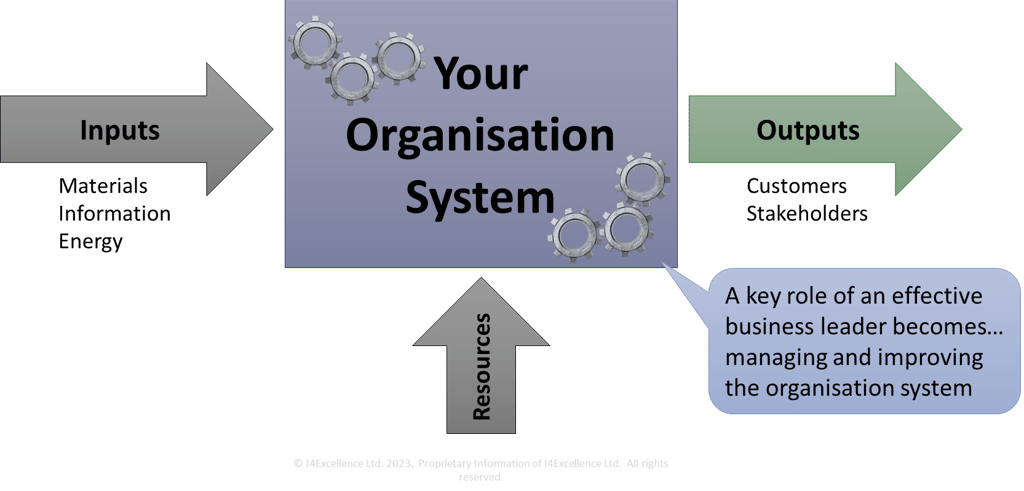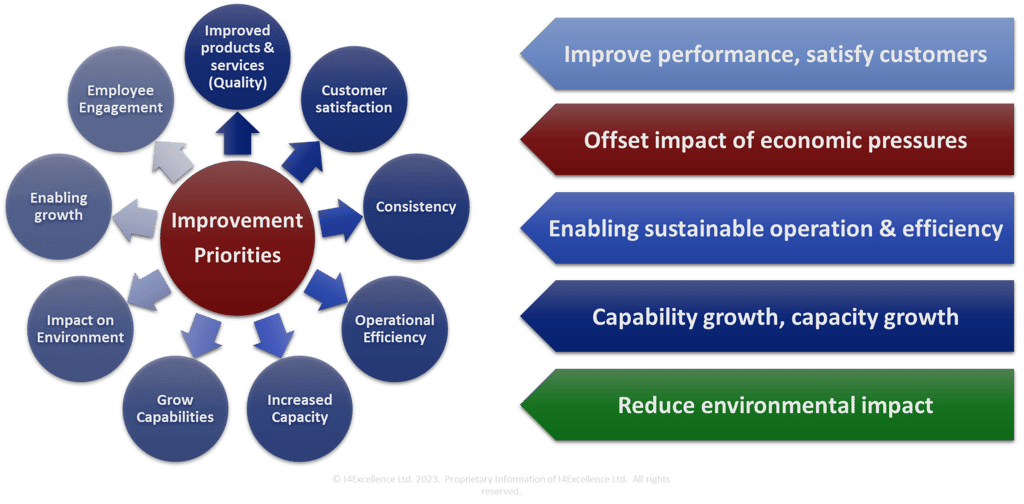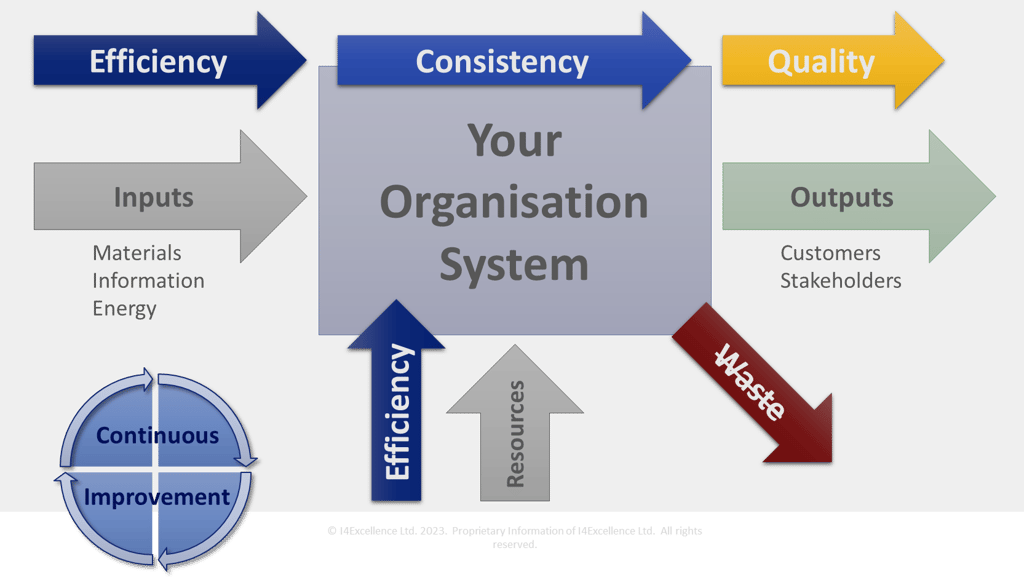Continuous Improvement for SME's - Solutions for Challenging Times
This short article explores why Continuous Improvement is important for any organisation of any size, the benefits, and the priorities that can be addressed.
CONTINUOUS IMPROVEMENTINVEST IN IMPROVEMENTIMPROVEMENT FOR SME'SSYSTEMS THINKINGORGANISATION IMPROVEMENT
At I4Excellence, we are Continuous Improvement experts, enabling improvement in organisations through strategy, training, coaching and partnership. We help organisations to develop the environment and capabilities required for Continuous Improvement and other Operational Excellence techniques to have impact.
If you are a small or medium enterprise (SME), why is that important for you? Why does improvement matter? What is Continuous Improvement anyway?
The origins of Continuous Improvement (CI) can be traced back to a U.S. programme in the 1940’s (Training Within Industry) but became a driving principle in Japanese industry from the 1950’s as U.S. ‘Quality Guru’s’ supported the recovery after WWII. CI and other ‘quality’ principles, methods and tools are credited with the success of Japanese industry from latter part of the 20th century.
"Continuous improvement… is the ongoing improvement of products, services or processes through incremental and breakthrough improvements. These efforts can seek ‘incremental’ improvement over time or ‘breakthrough’ improvement all at once.” - American Society for Quality
For the uninitiated, there are three key points so far…



CI is not effective all on its own, it only works with ‘System Thinking’, where we consider any organisation to be a system… which takes inputs and resources, adds value, and provides products or services to customers. Within the system are processes which transform inputs, adding value, and supporting the operation of the organisation – so ‘System Thinking’ is sometimes called ‘Process-based Thinking’. The larger the organisation, the more complex the system, but even SME’s must apply this way of thinking to improve what they do and how they do what they do!
So why is it important to think of your organisation as a system? If the organisation is operated as a system, then there will be some consistency in the way that inputs are translated to outputs, how customers are served, and how the organisation consumes inputs and resources.
Why improve the organisation system? No organisation system is perfect, there is always opportunity for improvement – improving customer outputs, increasing efficiency, growing capacity… all can be done with improvement of the continuous kind. There is also a fundamental point that systems degrade without focus and attention… and Continuous Improvement is a way of maintaining and improving the system incrementally all the time. An even more persuasive case for CI is… if your competitors have a more capable, efficient system, they have a strong advantage.
So, we have established that you must continuously improve your organisation system, where do you start? You start by focussing improvement on the important ‘strategic’ priorities of your organisation – this gives purpose to CI and allows CI to support the organisations journey into the future. While some of your priorities may be specific, many are shared by other organisations, which allows us to share a ‘menu’ of popular choices:
So once your priorities are set, where can you direct CI towards? Well, we go back to ‘System Thinking’ again as a generic model – CI is widely applied to…
Quality of outputs to customers
Efficiency and consistency in translating inputs to outputs within the system
Identification and elimination of waste
To conclude... I hope this article has helped to explain the fundamental reasons why Continuous Improvement should be applied in any organisation of any size.
What we have not explained in this blog, is how to do CI. The great news here is… there are many well proven structured approaches and tools that are easy to explain, well proven, and not too difficult to learn. We use those methods and tools to break down the organisation system into smaller parts – finer levels of detail and focus improvement on the critical elements that really make a difference to the whole. In my next blog I will introduce a handful of easy to apply foundation methods and tools which will give any organisation the opportunity to make a start.
For those seeking support in their own pursuit of 'Improving the Organisation System', please contact me at I4Excellence. We have a research-led understanding of improvement leadership, many years' experience of improvement methods and tools, and learning programmes which can be tailored to your needs. We can support with improvement strategy development, development of the CI environment, and delivery of learning programmes. Peer review, coaching and technical support for improvement activities are all at hand.
Steve Fannon.
Chartered Engineer, Lean Six Sigma Master Black Belt, CI Leader, Consultant, Trainer, Coach.










